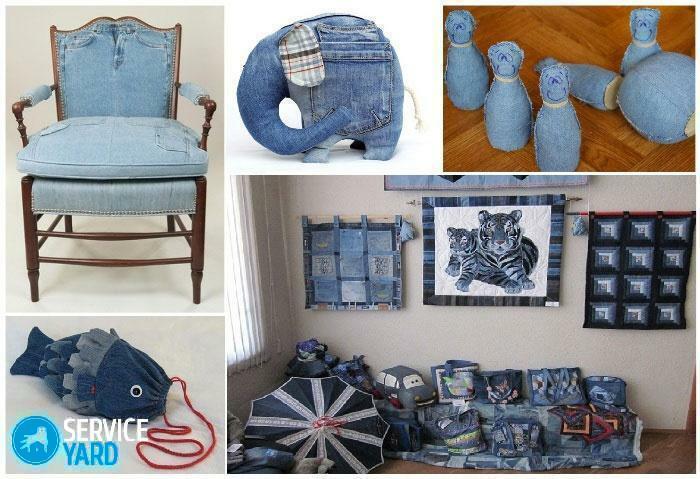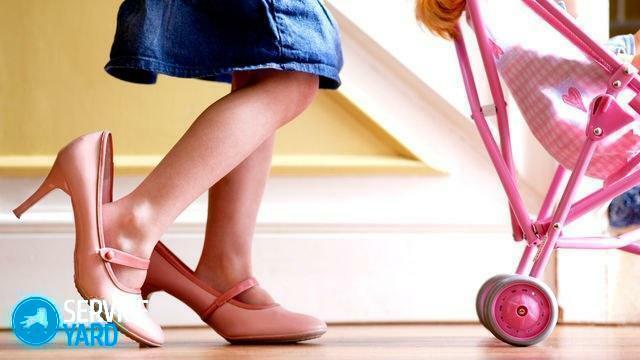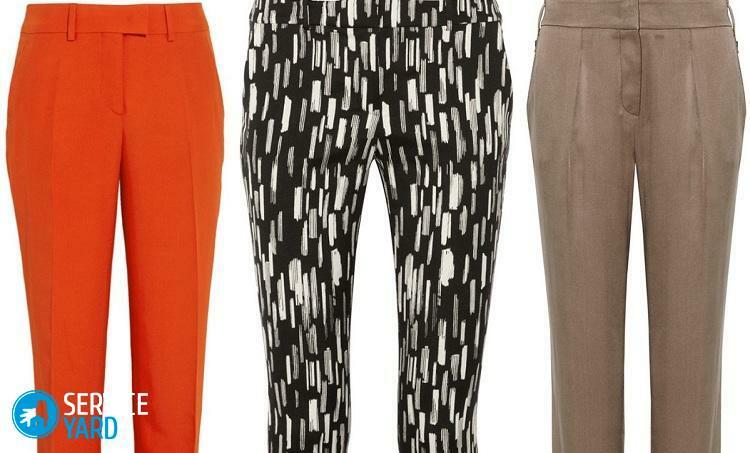Competent and well-organized filling for wardrobes or wardrobes allows you to save space in a small apartment and organize space in a spacious storage room. And vice versa, without a competent organization of storage of things, even the most spacious closet will simply take up space in the apartment. It is especially important to think over the filling for a small dressing room.
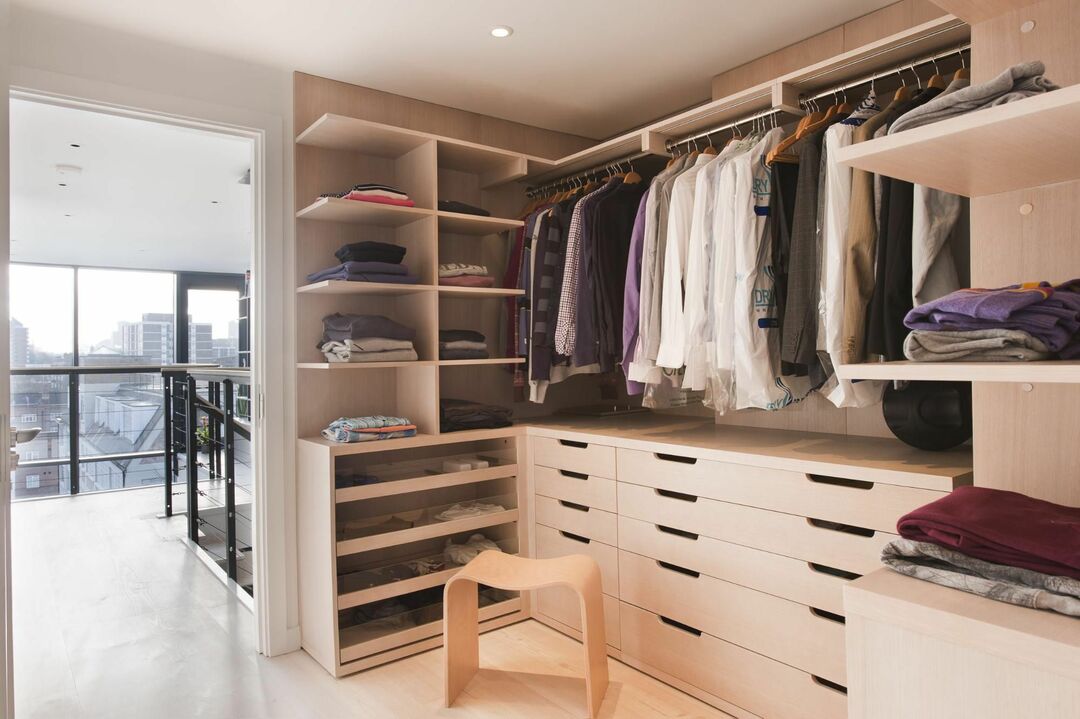
Increasingly, such a room is found in houses and even small apartments, for which a place is allocated in the form of a small niche in the hallway to a separate room.
Today sellers offer both complete storage systems and individual items. Considering all the subtleties and nuances of organizing a dressing room, you can save a lot of space and keep things in perfect order.
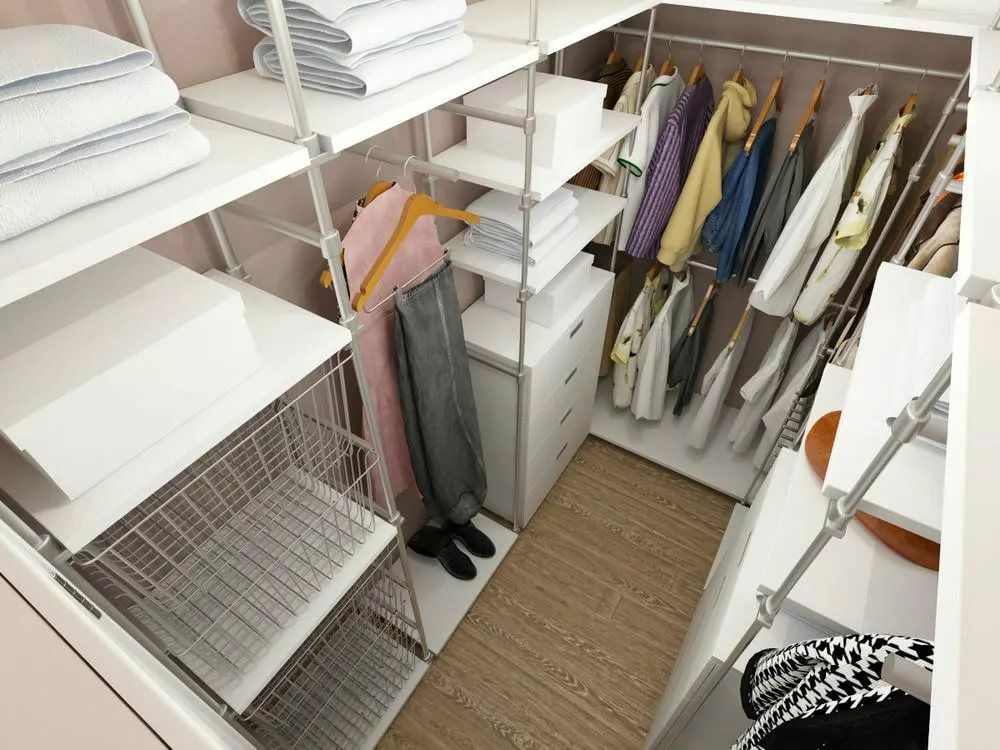
Choosing a dressing room is not an easy task, but it is much more important to make its filling functional and accessible.
Rules for organizing and filling in the closet and dressing room
Content
- Rules for organizing and filling in the closet and dressing room
- Types of storage structures
- The nuances of storing things in the dressing room
- VIDEO: Filling for wardrobes and wardrobes.
- 50 options for organizing filling in dressing rooms:
To build a comfortable and functional dressing room, you need to take into account the basic rules for both the arrangement of things and the organization of space:
- Individual space planning
- Structuring space
- Distribution of things by frequency of use
- Distribution of things by size
- Distribution of things by type
- Pantry ventilation
- Place for a large mirror
Individual planning of the space of the closet or dressing room is one of the most important rules. When placing hangers, shelves, baskets and all other structures, first of all, you need to take into account the nature and number of things in order to correctly organize the dressing room. One will have a large collection of shoes, the other will have many ties, and the beautiful person will have many dresses. All this requires a different design for storage. Again, long dresses and short dresses and blouses require hanger bars at different heights.
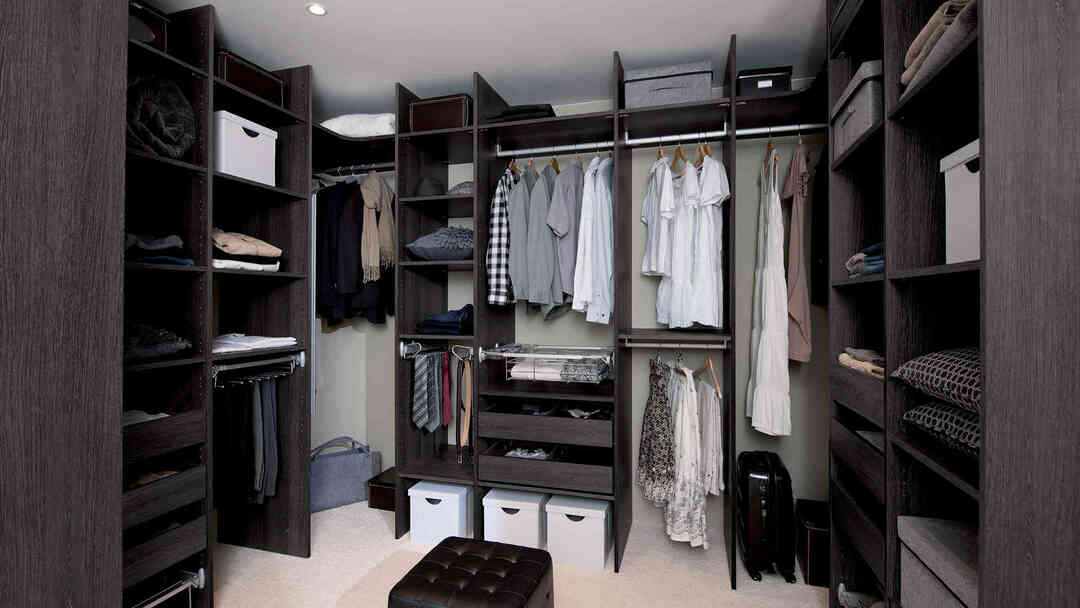
There are many designers and firms out there now offering their services to create a plan for your wardrobe, but it's easy to do it yourself.
Today, many manufacturers offer ready-made systems for filling the dressing room, but buying such is a gross mistake. They are only suitable if the person has few things.
When planning individual planning, it is important to take into account the personal data of the owners of the pantry. First of all, it is growth. Rails for hangers should be located so that it is convenient to reach them by hand, the most frequently used items - on shelves and in drawers at eye level.
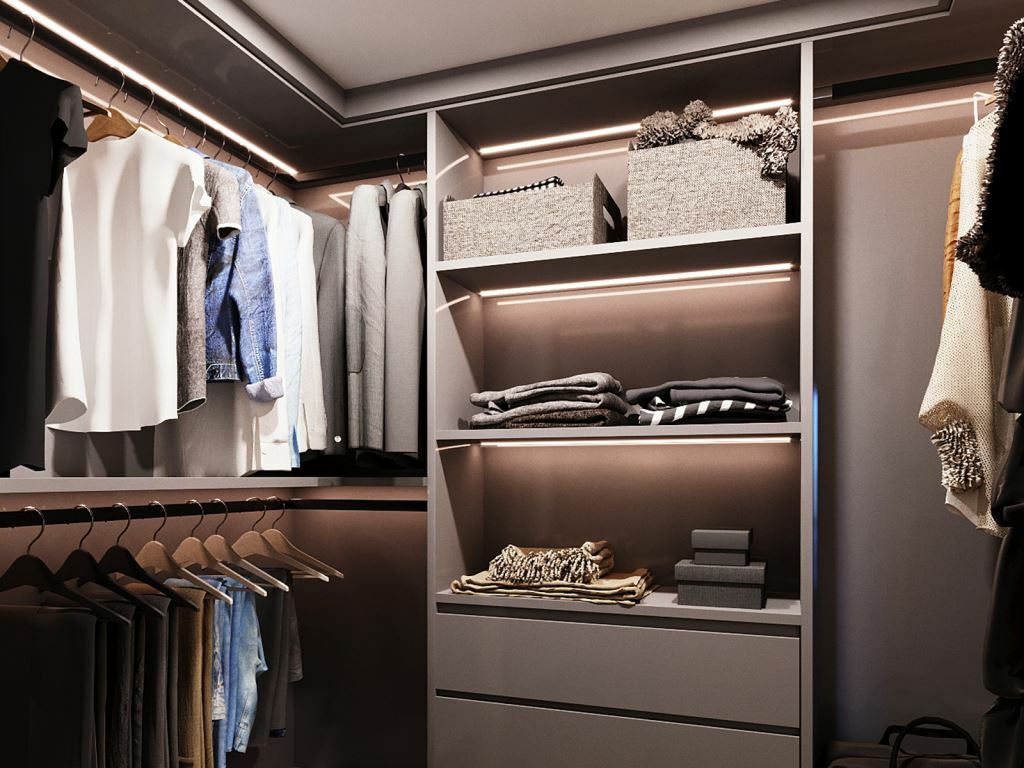
Order in the house is a guarantee of your good mood and the appearance of free time for other activities.
Structuring the space of the dressing room helps to conveniently arrange things, so that then they do not get mixed up and do not heap into a heap. In this case, things must be placed at once in different planes: both horizontally and vertically. To do this, it is best to mentally divide the space into three zones in height. The upper zone is above 190 cm from the floor, in the interval 60-190 cm from the floor - the middle zone and the lower one - up to 60 cm from the floor. These are standard sizes, but they can be slightly shifted depending on the person's height.
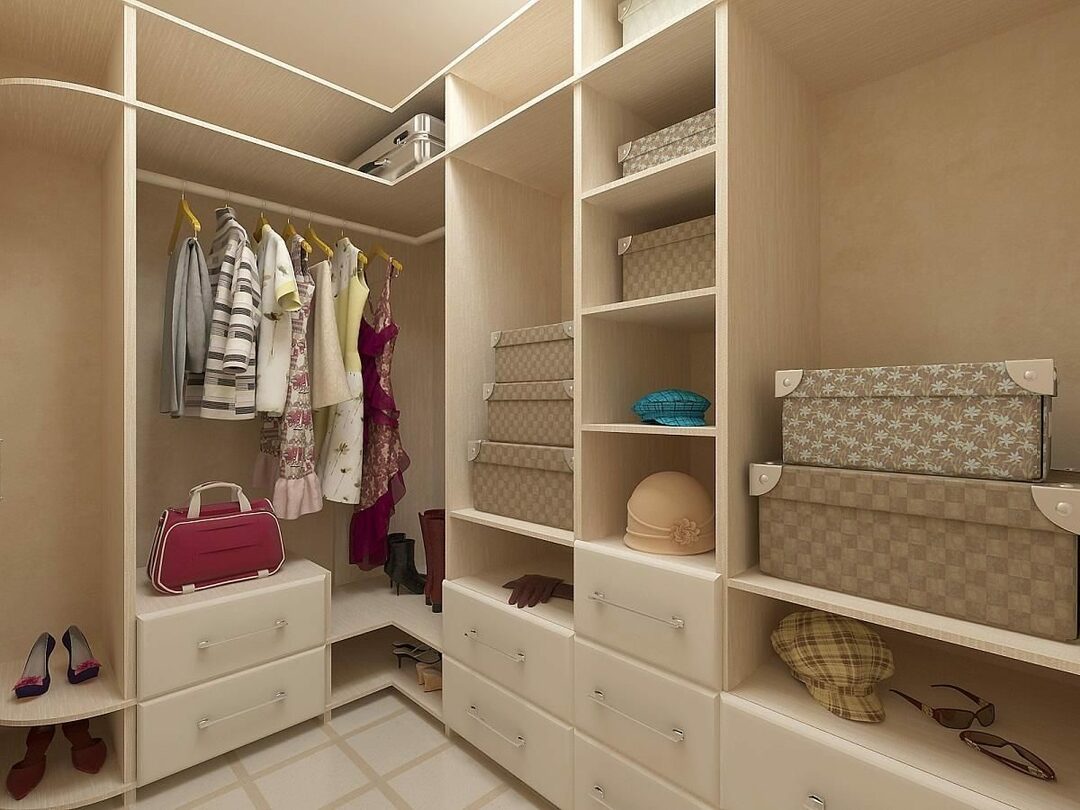
Filling the dressing room allows you to distribute things and provide them with proper storage, from which your dresses or trousers will not wrinkle (like on a chair), and there is a place for winter boots even in summer.
The horizontal organization of the dressing room involves the placement of drawers, shelves, baskets, cells so that each thing has its own place. To calculate the location of the shelves in the dressing room, it is important to take into account the frequency of use of things, their sizes and types.
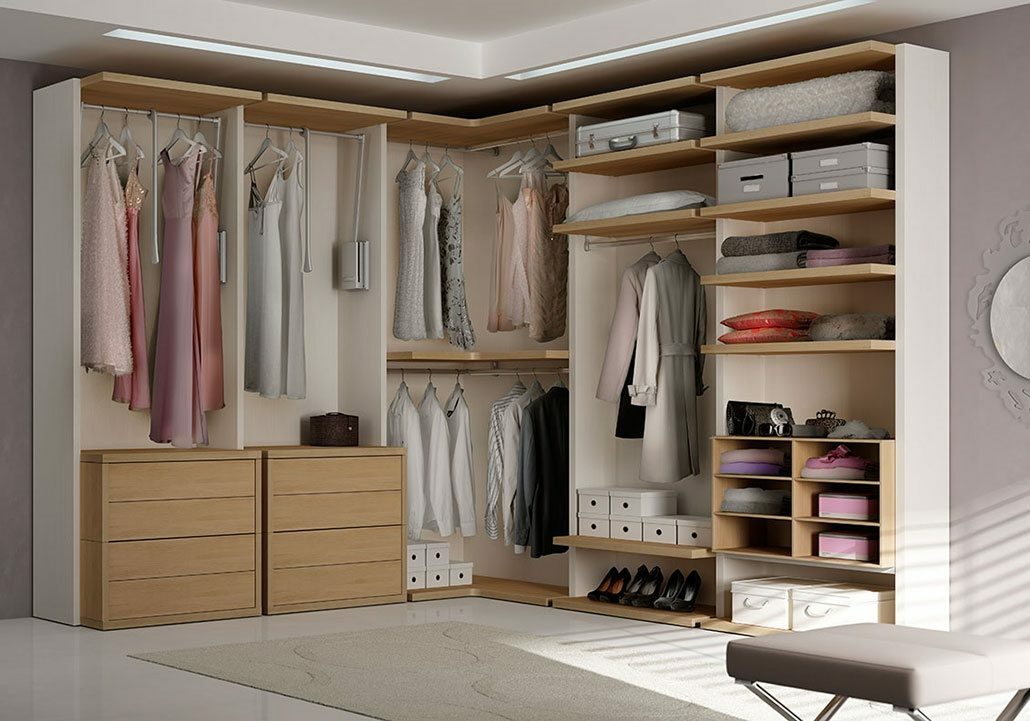
It is more profitable to purchase filling for the dressing room once, rather than endlessly buying wardrobes and dressers, which, moreover, clutter up the space in the house.
Distribution of things by frequency of use. It is quite logical that the most frequently used items should be located in the middle zone. It is highly worth removing things that are rarely used. It makes sense to put seasonal items, sports equipment, bedding and other accessories down. But shoes are better placed in a vertical system of cells or folding shelves. This way you can quickly find the right pair of shoes.

You can store not only clothes and shoes in the dressing room, you can hide household equipment there (for which they create an additional compartment in the room).
The distribution of things by size is important for calculating the layout of shelves, drawers and bins. The calculation here is simple - the size of the box is equal to the size of the item plus 5 cm, the size of the shelf is plus 10-20 cm. In order for standard items to be stored on a shelf in two piles, its length should be about 60 cm. It is better to place the top shelf 5-10 cm from the hanger bar. The depth of the wardrobe compartment is 50-60 cm, the width of the hangers is usually 35-50 cm. Blouses, shirts and other things of a similar length can be conveniently placed on two rods, while there should be a distance of 80-100 cm between them. Drawers should be about 40 cm high.
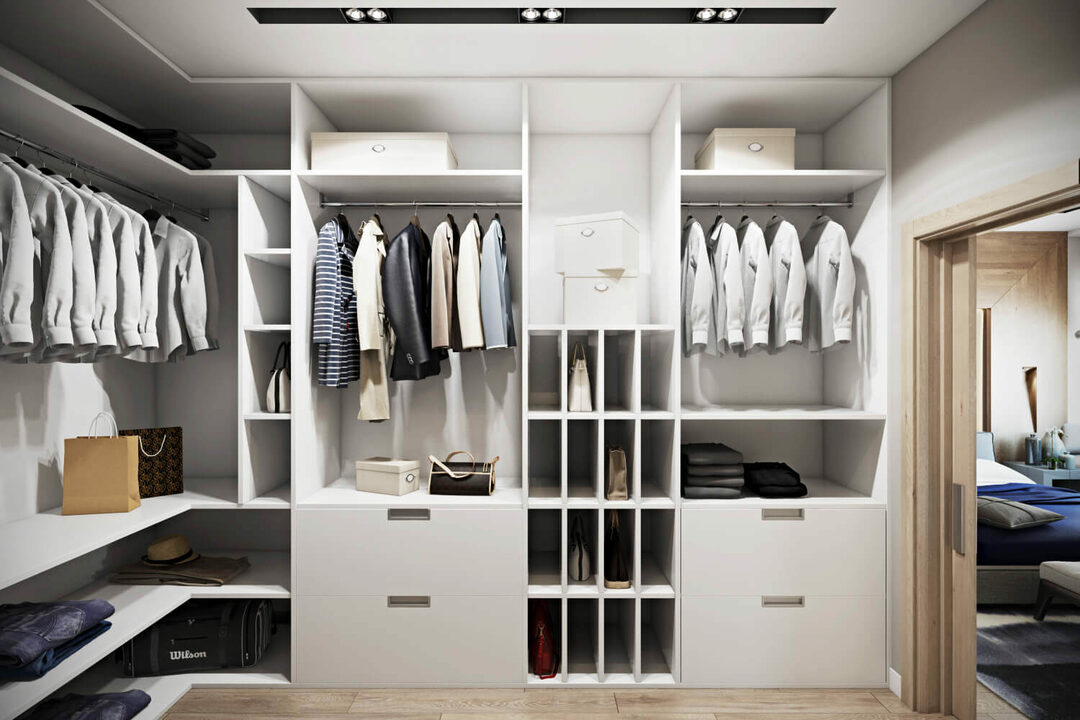
To create an affordable and functional dressing room model, it is worth dividing it into some areas for storing certain items of clothing.
When filling the dressing room, it is important to consider the types of things. Allocate separate shelves for ties, for different types of linen, boxes for socks and so on. They are conveniently positioned as you put them on. So linen should not be placed next to shoes. But it is quite ergonomic to place shelves with neckerchiefs or drawers with belts near shoes. The basic rule is to distribute shelves and drawers so that you do not have to run back and forth throughout the room.
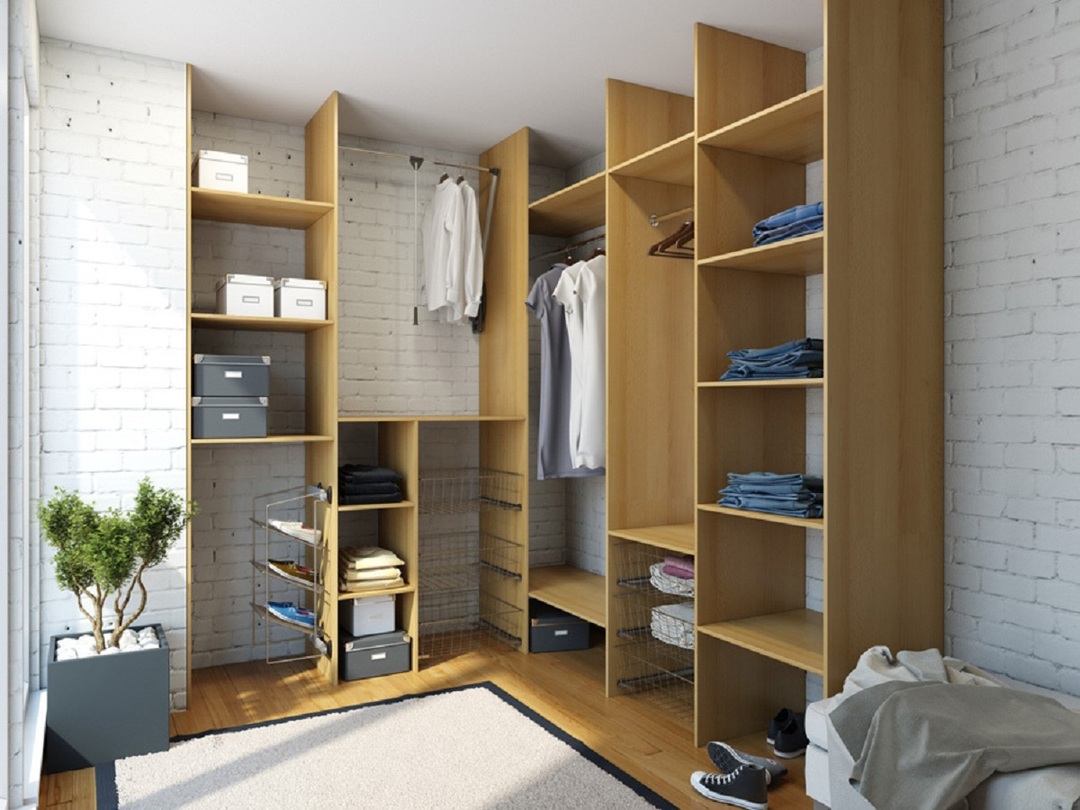
Open wall shelves can be the backbone of your dressing room as they are easy to store and allow you to see your clothes.
Ventilation is very important both for a regular wardrobe in the bedroom and for a spacious closet. The fact is that in a closed room without the supply of fresh air, humidity inevitably rises. This leads at worst to the formation of fungus, at best to the formation of an unpleasant odor of dampness.
This can be avoided by ventilating items after wearing them and storing them in sufficient free space. In a large dressing room there is an opportunity for airing things, rather than in a small wardrobe. In this case, the ventilation system is calculated separately in each case. The main thing is to provide an influx of fresh air to things.
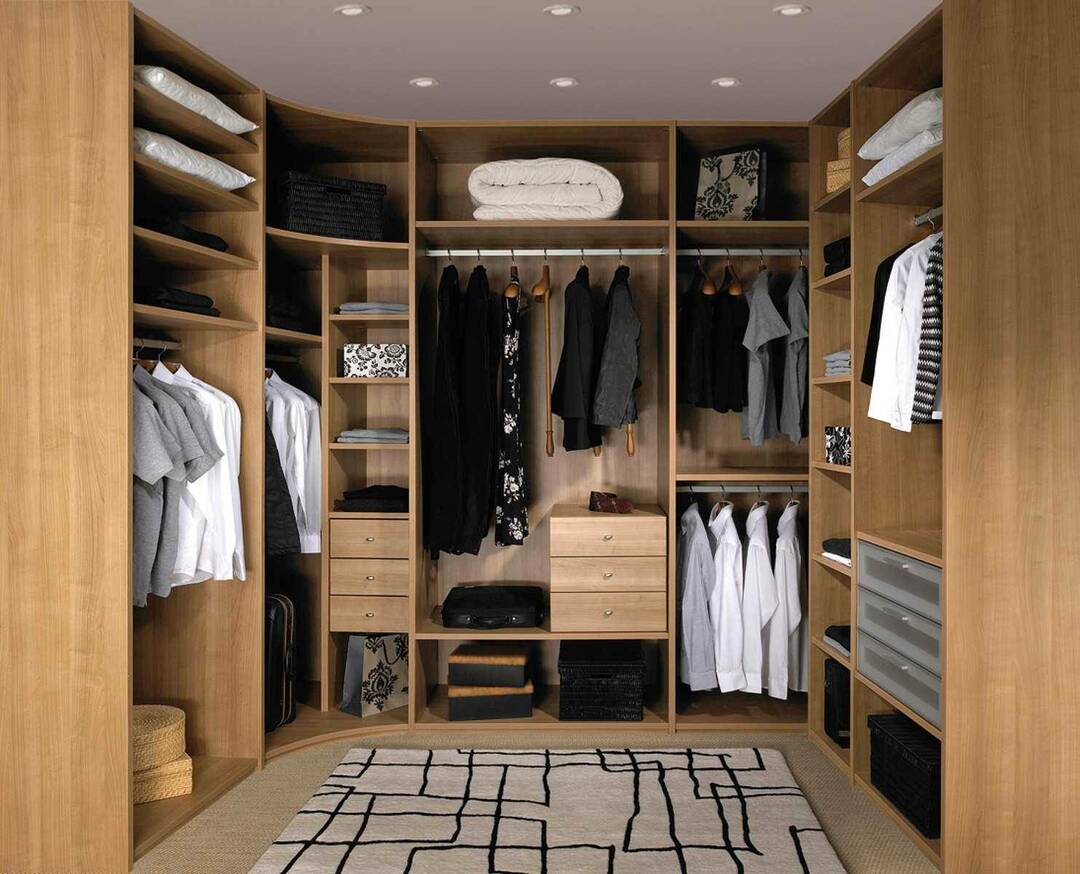
The shelves are universal in that you can hang them both above - in an area inaccessible to you without a chair, for example, and at eye level and even below.
Leave room for a large mirror. The mirror should be such that you can see and appreciate your image in full. In the dressing room, this can be a tall portable mirror. In a small bedroom, there is a mirror on one of the walls of the room or cabinet doors.
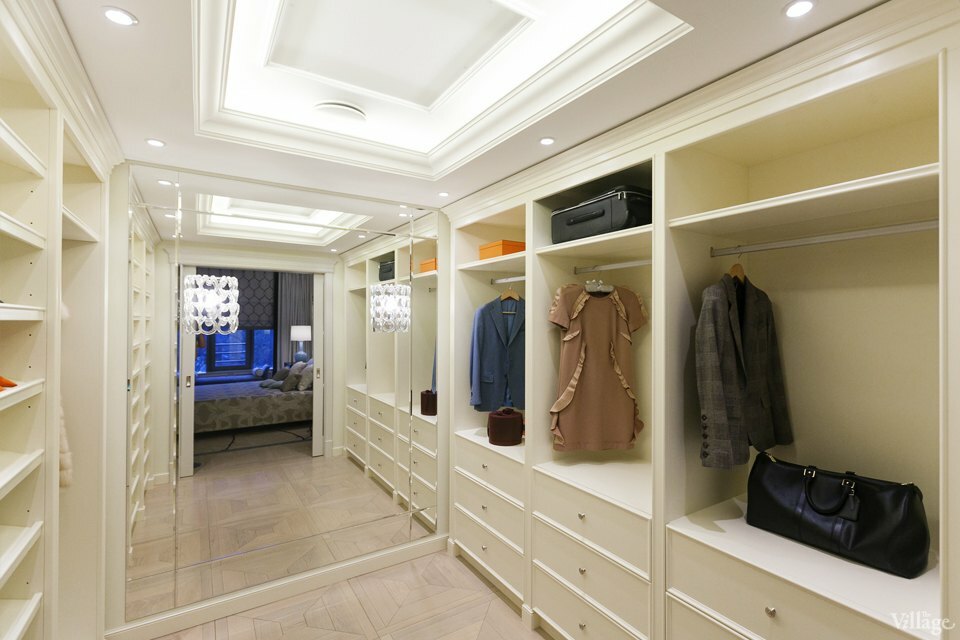
A large mirror will allow you to quickly navigate in the choice of an outfit.
Types of storage structures
After everything is thought out what and where is stored, it is time to start choosing and planning structures. There are several types of such products:
- Hull.
- Mesh.
- Aluminum.
The case or frame versions of the systems are made of wood or MDF and metal. They combine barbells, racks, drawers, static shelves, compartments, and flip-up shoe boxes. Cabinet systems made of MDF and wood are the most expensive, but at the same time the most convenient options for filling the dressing room. As a rule, they are made in the form of ready-made modules, which can be conveniently combined with each other in different versions. The finished modules are rigidly interconnected and securely attached to the walls. In the wardrobe, they are also built into its walls.
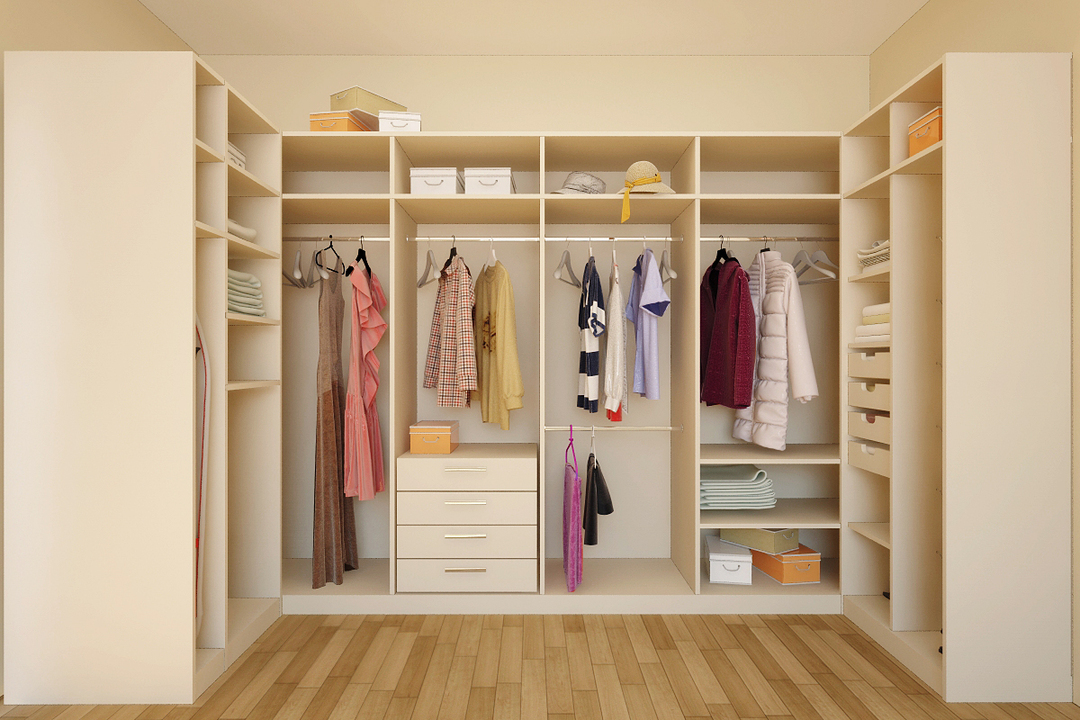
If you want to swap the modules or change something else inside the room, it will no longer be possible without serious alterations.
Mesh systems are racks made of metal mesh, drawers and baskets for the dressing room. This is the most budget-friendly option. At the same time, mesh structures are the least durable. If you completely fill the wardrobe with mesh structures, it will not be entirely convenient and practical. But the baskets for the dressing room are well suited for storing bed linen, seasonal items and just large soft items.
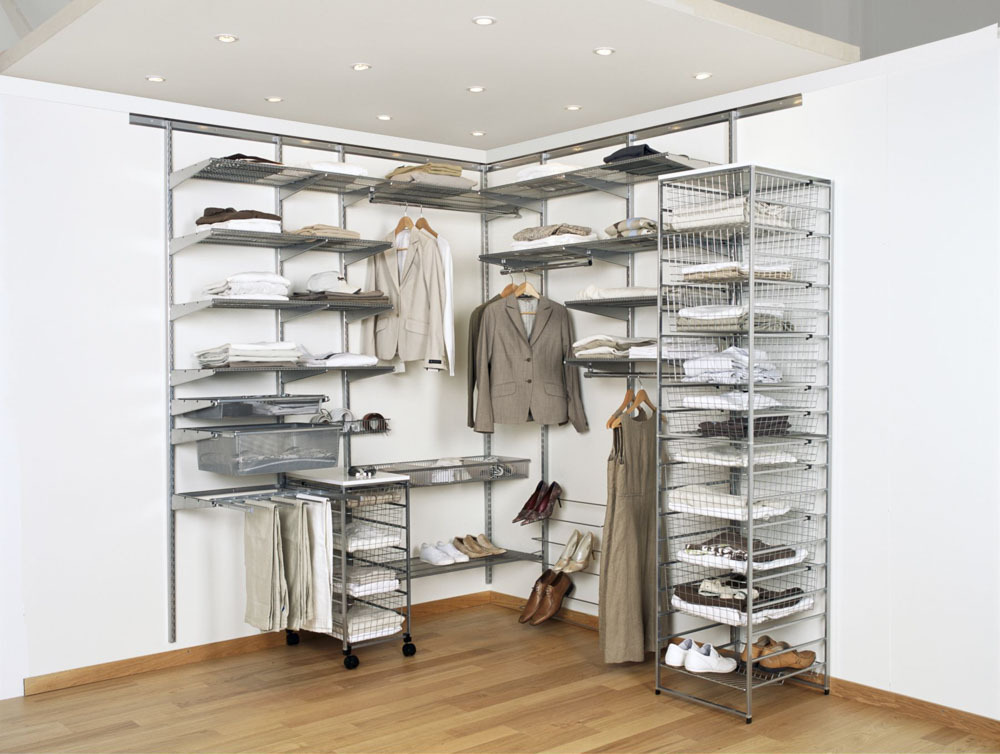
Mesh boxes provide good ventilation for items that are not used for a long time.
Mesh systems are the most mobile, easy to fold and place. Take up little space during transportation. They are well suited for a rented apartment.
Aluminum structures are racks, rods, pull-out modules completely made of metal. As a rule, such systems are complemented by more MDF boxes.
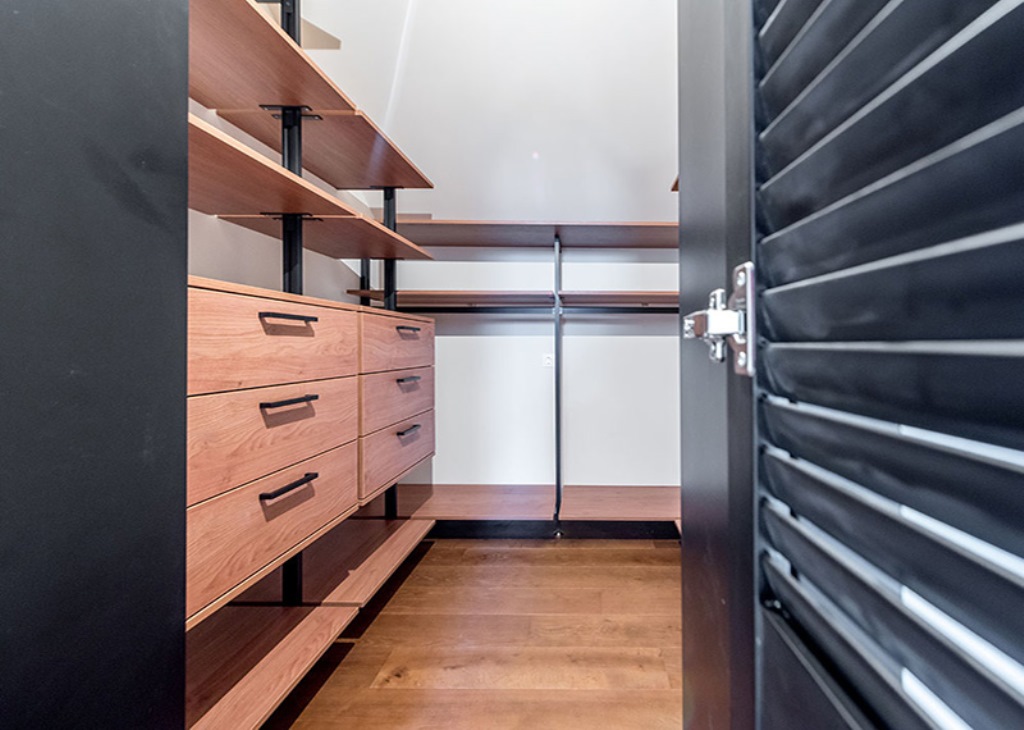
This is a durable and budget option for organizing a dressing room.
The nuances of storing things in the dressing room
Filling for sliding wardrobes and dressing rooms involves the location of individual elements inside. These are different storage devices:
- Shelves.
- Boxes.
- Bars and pantographs.
- Trouser hangers.
- Racks with cells.
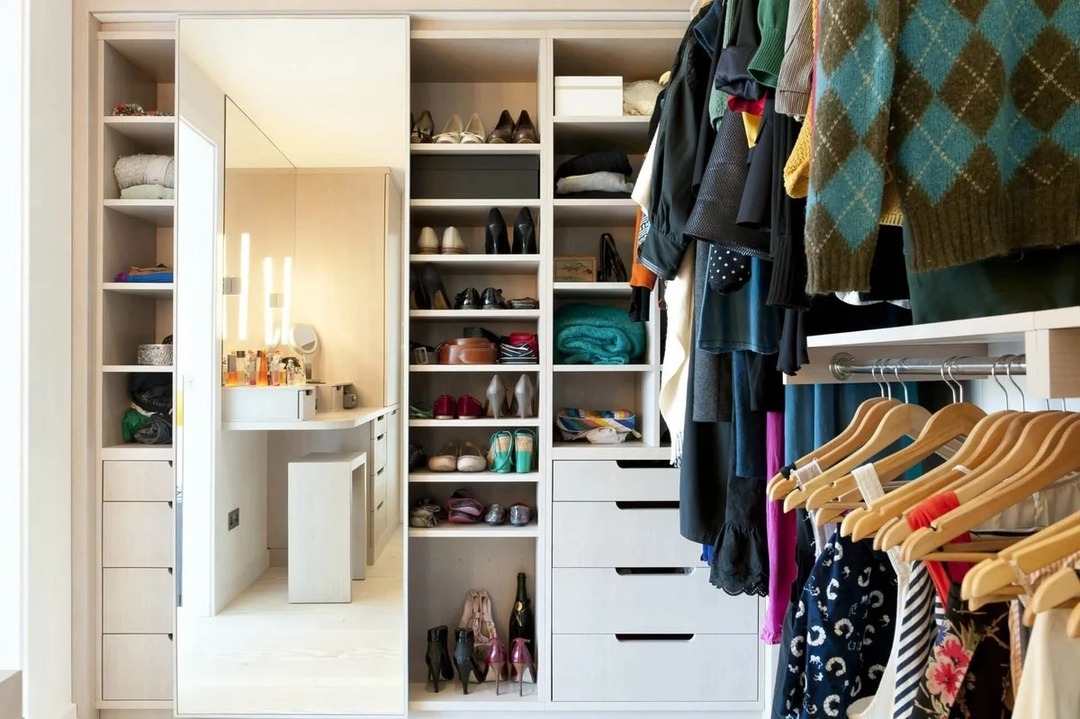
Eye-level shelves are a great way to organize your belongings on top of them.
Shelves. The location of the shelves in the dressing room depends on the size and functionality of things. It is convenient to place baskets or boxes with little used items on the upper shelves. On the shelves in the middle zone, you can arrange the most popular items. In this case, it is better to lay them out in one or two piles, no more than 10-15 cm high. Since the shelves do not move, it is ideal to leave a free space of 15-20 for the convenience of hand movement. It is also convenient to place shoes on the shelves. This can be a rack with square cells or hinged closed shelves.
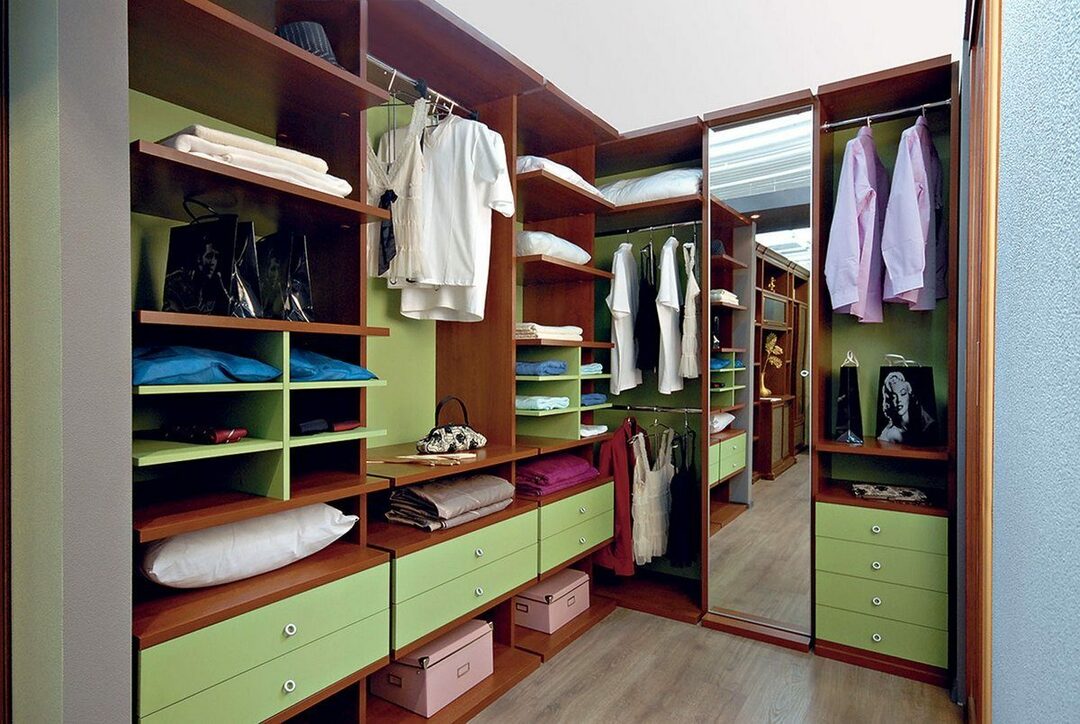
Choose shelves from 40 cm wide, but you shouldn't make them too wide either.
The boxes are needed in different sizes. Large drawers or baskets are great for storing bed linen, large seasonal items, sports gear and gear. Medium-sized drawers are suitable for storing underwear, socks, hosiery and other small items. For ties, socks, accessories, jewelry, models divided into small sections are suitable. For convenience, you can also put small boxes inside and distribute, for example, jewelry over them. This will avoid confusion and wasted time when looking for things.
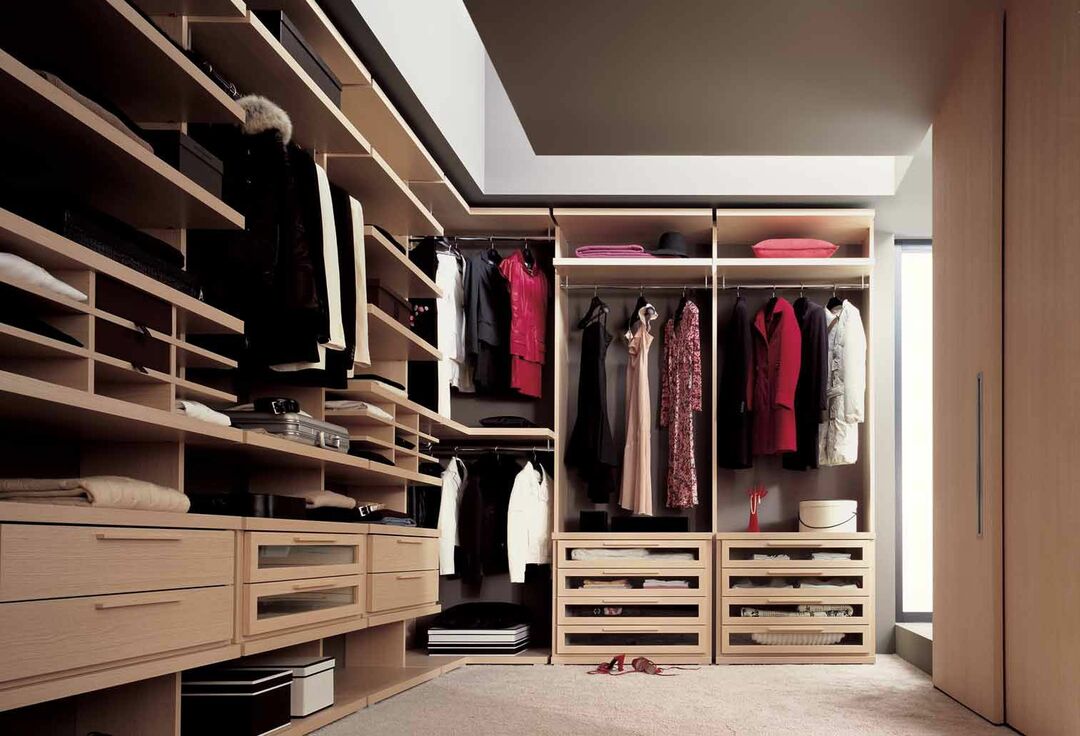
Drawers are predominantly located at the bottom of the dressing room filling.
Rods and hangers for trousers and skirts. The optimal length of the rods is 80-100 cm. Longer barbells will flex and then break under the weight of things. It is better to make several different compartments for hanging things. In a narrow or corner cabinet, you can position the bar in the form of a spiral. This will save a lot of space and arrange things in a visual form. Pull-out rails are also suitable for a narrow cabinet. It makes sense to use huge pantographs or a bar with an elevator in a spacious room with a deep opening. Ideally, there should be several rods in the dressing room:
- For long dresses. It is advisable to leave a large space below.
- For blouses and shirts. These rods can be positioned above the bottom of the other.
- Pull-out bars for trousers and skirts.
- Pantographs with a barbell moving in height.
- For shawls and scarves.
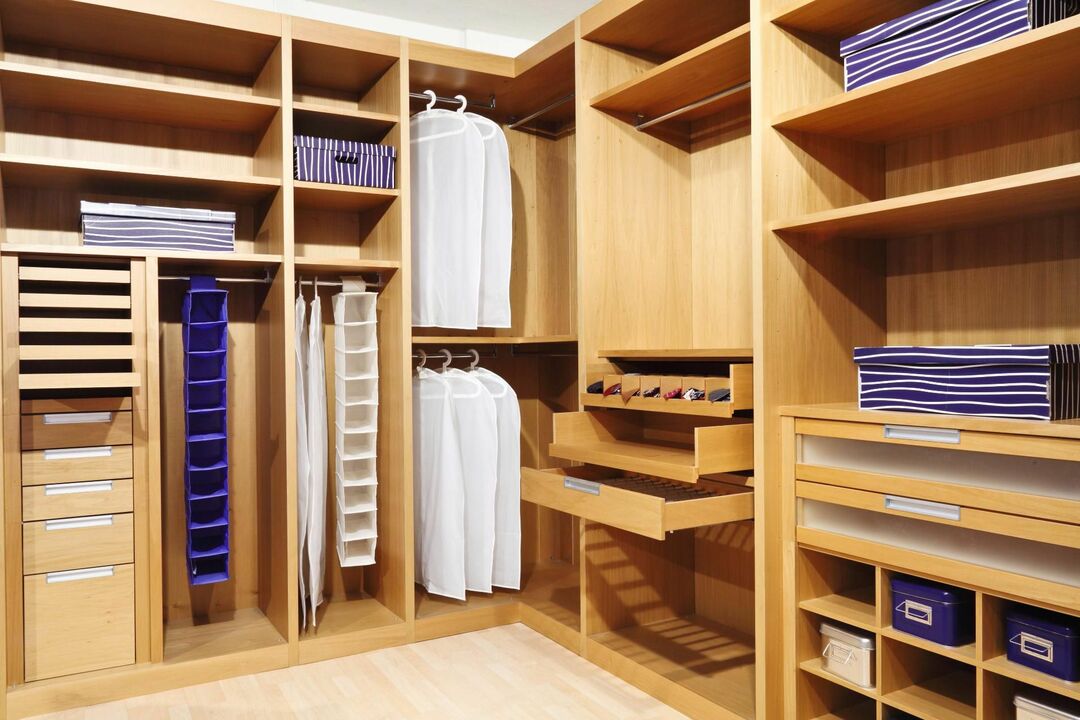
Rods are used to store things on hangers, and in filling the dressing room it is better to choose from two types: higher and standard.
In addition, the filling of the wardrobe can contain many more useful designs: tie-holders, shoe racks, belt and scarf holders. Their purchase and location depends on personal preference. The main purpose is to organize the arrangement of small and non-standard items in order.
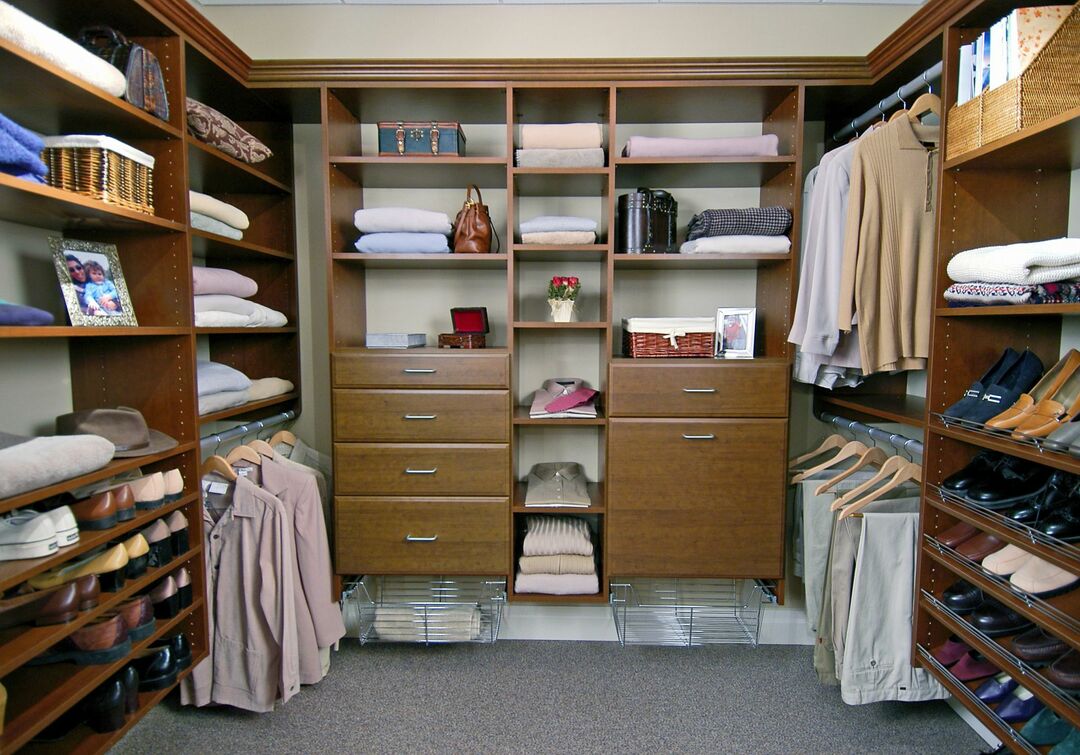
It is very important to store your shoes correctly, and special open shelves, made at a slight slope, will help you with this.
The most important thing in filling a wardrobe or dressing room is to make the suit fit or to make it convenient for the owners to find the things they need and put them back after wearing them.

